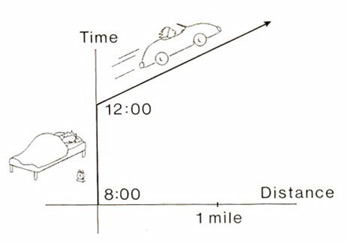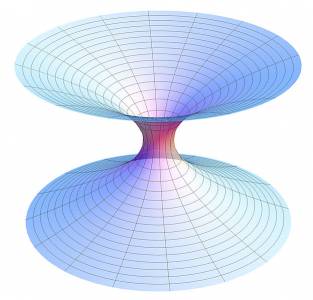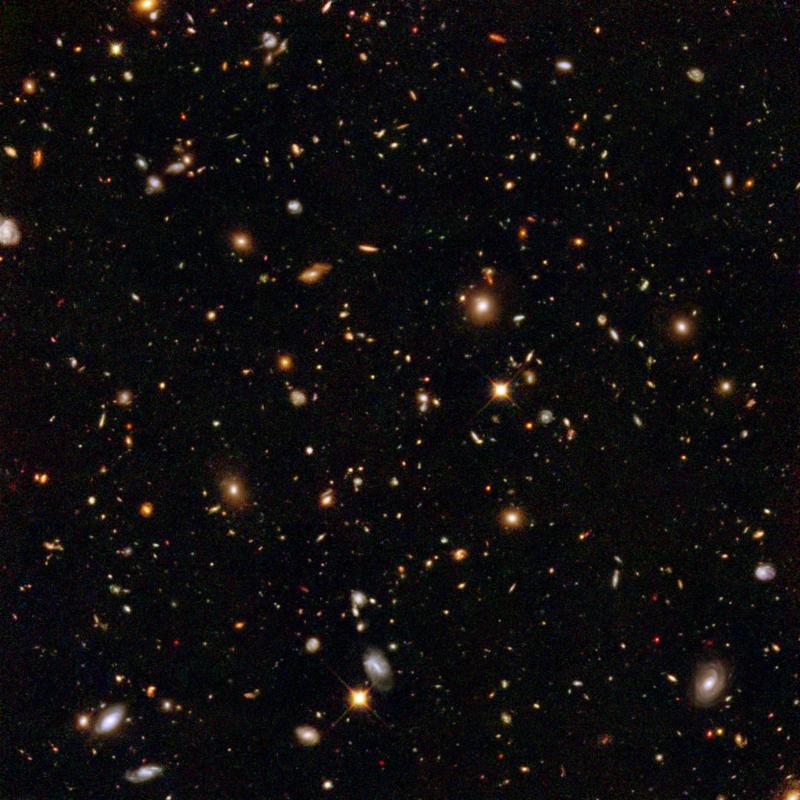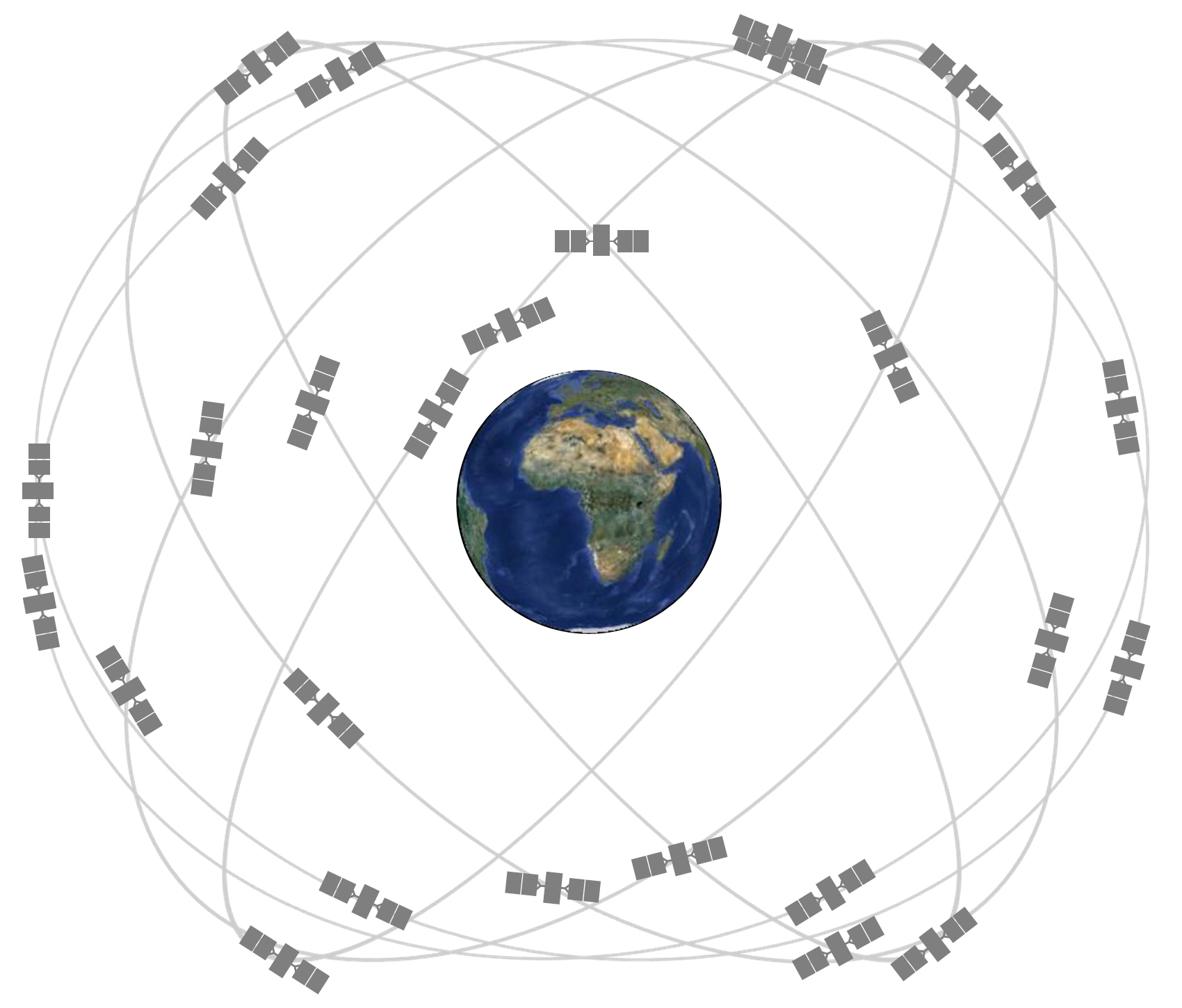Albert Einstein & Time Travel Theory
The Science of Time Travel
At the time of publication, Mark Villanueva was a student at the University of Southern California in his third year towards his BS in Computer Science. Back to the Future is one of his favorite movies.
Time travel involves either moving backward to the past or forward to the future. Just as our current actions affect the future, our actions of the past can affect the present. The Grandfather Paradox, which must be addressed when discussing time travel, describes the potential problems that can arise from traveling to the past. Albert Einstein resolved the issue with the concept of world lines. Future time travel requires traveling at the speed of light while past time travel requires the use of wormholes. Both types of time travel are very difficult to accomplish because of the technology and energy that would be required to move at the speed of light. While theoretically possible, time travel is better left to a more advanced civilization.
Introduction
In a modern world inhabited with robotic dogs, the Internet, and cloned mice, science fiction is quickly becoming science fact. One of the most intriguing science fiction technologies is time travel. Who wouldn’t want to go to the past to relive the best day of their life or travel to the future to witness the first colony on Mars? Time travel involves more than merely jumping into a time machine and entering the desired date of arrival. Even though the reality of time travel is theoretically possible, it cannot be fully implemented in the near future due to massive energy requirements. In addition, the existence of time travel creates paradoxical issues that need to be resolved. However, time travel is not totally out of the question.
Definition of Time Travel
To better understand the possibility of time travel, it is important to first define it. In our world, we can move freely in three spatial dimensions [1]: forward and backward; left and right; up and down. We can accomplish movement in any of these directions without a second thought. For example, I can travel to my professor’s office by walking down one street, making a left onto an intersecting avenue, and then taking an elevator up to the second floor (Fig. 1). Every object’s position around the world can be described by these three dimensions. There also exists an additional dimension, that of time, which physicist Albert Einstein established as the fourth dimension [2].

Traversing in the fourth dimension is vastly different than moving in the previously mentioned three. We simply cannot will ourselves to move forward five minutes or back ten days. In other words, time only moves forward, and we are stuck moving in that direction like corks bobbing helplessly in a river [1]. Thus, the end goal of time travel is to enable us to control where we go in this fourth dimension. Much like moving back and forth, time travel involves moving to either the past or the future. However, our actions in the fourth dimension are cause for concern. What we do now in the present affects our future. In the same manner, our actions in the past should have affected our present lives. Changing the outcomes of past events leads to what physicists and philosophers refer to as the “Grandfather Paradox,” an issue that needs to be addressed in any serious discussion of time travel.
The Grandfather Paradox
Suppose time travel to the past does one day become possible and some time travelers make a journey to 1960s Texas to prevent the assassination of President Kennedy. Another time travel group brings back blueprints of the latest SUV to a young Henry Ford. Logic dictates that these meddling time travelers just altered the future. What if by changing the future world, they prevented themselves from being born? This would mean that they should cease to exist, but if they were not born, then how did they change the past in the first place? These seemingly mind-numbing problems are variations on the Grandfather Paradox.
The Grandfather Paradox involves the question: If a person traveled to the past to murder his grandfather, thus preventing his father and subsequently himself from being born, what happens to that person? Does he simply fade away into non-existence? If he is not born in the first place, how did he manage to travel back in time to kill his grandfather? A solution to this paradox is necessary before even considering the possibility of time travel. There are a number of suggestions of ways to resolve the paradox. Philosophers present a simple solution. They reason that when the grandson attempts to murder his grandfather, he fails on all accounts because it is logically impossible to change the past [3]. This is because the grandson still exists in the present and when he goes back in time. Any number of things could go wrong: he misses on every shot or the gun doesn’t work. By virtue of his own existence, no matter how hard he tries, he cannot kill his grandfather. This can also be applied to other cases where time travelers attempt to change the past. They simply cannot succeed due to the nature of the timeline from which they came.
The philosophical drawback to this resolution is that it has serious implications on the nature of free will [4]. The grandson freely decides to kill his grandfather, yet it is as if some force has predetermined that his grandfather will not die. The absence of free will on the grandson’s part makes this solution to the paradox hard to accept. Another explanation of the paradox involves the concept of parallel universes.
Theoretical physicist David Deutsch proposes the concept of “many worlds” in resolving the Grandfather Paradox [1]. He theorizes that multiple universes are created by each event in the world. For instance, suppose I waited until the last minute to write this article instead of starting on time. This decision just triggered another universe. In one world, I started the article on time and received a passing grade. In one of the many others, the paper was late and I was not pleased with my grade. Applied to the Grandfather Paradox, if the grandson was successful in killing his grandfather, it would create an alternate universe in which his grandfather was dead. This would in no way affect the grandson, and he would still remain in existence, passing from one universe to another. So the original universe with the living grandfather still exists yet the grandson is absent from it. The grandson instead lives in the newly created universe without the grandfather.
This solution to the paradox has its flaws, however. Every single situation for every single person must be accounted for, resulting in an infinite number of different worlds. In fact, the smallest change in the most minuscule of atoms could spur another world into existence. This many-worlds solution is difficult to accept because it mandates “the existence of a mind-boggling number of parallel universes that accommodate every possible combination of behaviour for all the particles in the universe” [5].
Einstein”s theory of relativity gives the best answer to the Grandfather Paradox by providing the idea of a “world line.” A world line is best visualized on a time versus distance graph. Your position at any time is plotted in terms of time and distance: the time you are at that position and its distance from an origin. If I remain in my apartment (the origin) for two hours, for example, the world line is a vertical line parallel to the y-axis. No distance was traveled but time elapsed. If I walk to school, my world line becomes slanted because not only is time increasing, I also travel a distance to school. In this fashion, one can imagine a long world line being traced over the span of my lifetime, from my birth until my death. In fact, after death, my world line will not end. The world lines of the molecules in my body will continue because they too travel a distance over a time [2].
This world line view can now address the Grandfather Paradox. If the grandson manages to kill his grandfather, the commonly held belief is that the grandson immediately fades away into non-existence. Since his grandfather dies, his father is never born, which precludes his own existence. If that were the case, his world line would disappear, which by Einstein’s theory, is impossible. As mentioned before, world lines do not end, and cannot be destroyed. Each world line can be broken down into smaller world lines, world lines of molecules, for example, but they can never be cut. So, in actuality, you could kill your grandfather in the past and it would have no bearing on your current state.
“Building” a Time Machine
It is important to recognize that the theoretical specifics on how to accomplish time travel are highly speculative. Nevertheless, there are two directions of time travel: going to the past and going to the future. The latter is the easiest to perform, relatively speaking of course.
Einstein”s Theory of Special Relativity states that “time slows down for objects moving close to the speed of light, at least from the viewpoint of a stationary observer” [1]. For instance, an astronaut can travel 500 light years into outer space at 99% the speed of light and return (at the same speed) to an earth that will be 1000 years older while the astronaut will only have aged 10 years [4]. Experiments have been performed wherein atomic clocks were sent into orbit around the earth and their ticks were compared to clocks on earth. The clock on earth and the clock in space ticked at different rates [2]. Thus, time passes differently when you move in space; traveling into the future is possible, even at the speeds that our astronauts travel. Of course, they would probably only be gaining a few nanoseconds, but when they return, the time on earth is ahead of their system time. From their perspective, they have returned to the future [6]. This time dilation effect is more pronounced when velocity approaches the speed of light. Unfortunately, at the speed of light, time stops, the length of the moving object contracts to zero, and resistance to acceleration becomes infinite, requiring infinite energy [6]. Obviously, it is physically impossible to travel at the speed of light, let alone beyond the speed of light, a logical requirement for traveling to the past.
Theories of time travel into the past utilize the notions of black holes and wormholes. A black hole is a celestial body whose surface gravity is so strong that nothing can escape from within it. In theory, a black hole comes about when a star undergoes gravitational collapse at the end of its star cycle. The concept of black holes goes back to the French mathematician Pierre Simon de Laplace. In a 1798 treatise, Laplace agreed with Newton’s assertion that light is composed of particles. He reasoned that if enough mass were added to a star (such as our Sun), the gravitational force of the star eventually would become so great that its escape velocity, the minimum speed required for an object to escape permanently from the star’s gravitational field, would equal the velocity of light. At that stage, light particles would not be able to leave the surface of the star and it would become an invisible star. More than a century later, Einstein, developing his special theory of relativity, asserted that nothing can move faster than light. Therefore, Laplace’s black stars are also black holes, because if light cannot escape, all other matter must be trapped as well. The surface of a black hole thus acts like a one-way membrane: material may fall into a black hole, but no information or energy can come out of a black hole [7] (Fig. 2).
Unfortunately, no black hole has yet been positively identified. Black holes, if they exist, could come in an extreme range of sizes. The English physicist Stephen Hawking has speculated that tiny black holes with masses no larger than that of a large mountain are possible. Such black holes, in the size range of elementary particles, would have been formed only under the extreme conditions that cosmology theories indicate existed in the very first moments of the universe. On the other hand, gigantic black holes may lie at the center of galaxies [7]. Einstein envisioned a situation in which the ends of two different black holes could be connected. This is known as a wormhole.
Unfortunately, no black hole has yet been positively identified. Black holes, if they exist, could come in an extreme range of sizes. The English physicist Stephen Hawking has speculated that tiny black holes with masses no larger than that of a large mountain are possible. Such black holes, in the size range of elementary particles, would have been formed only under the extreme conditions that cosmology theories indicate existed in the very first moments of the universe. On the other hand, gigantic black holes may lie at the center of galaxies [7]. Einstein envisioned a situation in which the ends of two different black holes could be connected. This is known as a wormhole.

Figure 3: A theoretical depiction of a wormhole. Scientists postulate that with these, a quick path through the universe can be taken.
The wormhole is one basis for time travel into the past. Physicists liken wormholes to quick paths through the universe, much like the hole a worm burrows through an apple [8]. Instead of apples, these wormholes are theoretical tunnel shortcuts through space (Fig. 3).The trick in this case would be flying a spaceship into the one mouth of the wormhole and coming out the other side in a different time and place [9]. This involves moving one end of the wormhole close to the speed light and keeping the other end stationary near earth in outer space. Like the example with the spaceship traveling near the speed of light in space, the moving end of the wormhole in space will “age” slower than the stationary one; the “younger” end is a quick shortcut that connects to an earlier time on the fixed end [1], so the moving end of the wormhole will bring the traveler back to the past. The time travel process will probably involve a team of advanced scientists that can create wormholes and move them while the time traveler goes through the wormhole in outer space via a spaceship.
Even though a wormhole could be used to travel to the past, the concept is still based on theory. In 1917, German astrophysicist Karl Schwarzschild used Einstein’s theory to calculate that if a star of any given mass were compressed to a size smaller than a critical radius, now called the Schwarzschild radius in his honor, the density would become so high and the gravitational force so great that the star would become a black hole. The spherical surface around the star at the Schwarzschild radius is called the “event horizon” and marks the outer surface of the black hole at which the escape velocity just equals the velocity of light [7]. Suffice it to say, scientists cannot generate wormholes, let alone move them at the speed of light and position them at will. Forming a wormhole requires a mass equivalent to two hundred times the mass of our sun. Moreover, there is the problem of a traveler surviving the wormhole’s gravitational field, which would easily tear the traveler apart [8]. Another problem with a wormhole is that the channel created between the two black holes is smaller than a single atom and only remains open for a fraction of a second [10].
One way to keep the wormhole open long enough for a spaceship to travel through is by using antimatter. Antimatter is a form of matter in which the electrical charge of each constituent particle is the opposite of that in the usual matter of our universe. That is, an atom of antimatter has a nucleus of antiprotons and antineutrons surrounded by positrons. Regular matter has the tendency to draw other bodies of mass to it. For example, massive objects, like the sun, pull planets into its orbit. Antimatter has the opposite effect. It, unlike regular matter, pushes the space around it apart [11]. Thus, antimatter could be used to hold open the “throat” of the wormhole long enough for a spaceship to travel through [10].
The Reality of Time Travel
Time travel is vastly different than what is portrayed in popular fiction. To dash the hopes of anxious time travelers, don’t expect to be witnessing Napoleon’s last stand or hoverboarding anytime soon. First, only a highly advanced civilization can meet the energy requirements and possess the technology needed for time travel. Such a civilization will need to harness the power of stars and be able to exploit entire galaxies as power sources [2]. Second, time travelers cannot alter their current state by traveling to the past. They can observe and interact but it will make no difference on the future. Finally, a time machine is not a self-contained unit such as a chair surrounded by rotating gears or a souped-up Delorean: real time travel involves spaceships, black holes, and wormholes. One cannot merely push buttons and travel through time. While time travel may not be realized in our lifetimes, it may be possible far off in the future. In the meantime, fanciful tales of time travel still make for a good read.
Albert Einstein & Time Travel Theory
Amanda has taught high school science for over 10 years. She has a Master’s Degree in Cellular and Molecular Physiology from Tufts Medical School and a Master’s of Teaching from Simmons College. She is also certified in secondary special education, biology, and physics in Massachusetts.
Albert Einstein, a German physicist, contributed to the theory of time travel through his theory of relativity. Learn about time travel, Albert Einstein, the problem with speed and light, the theory of relativity, and how gravity affects time travel. Updated: 11/19/2021
What Is Time Travel?
If you’ve ever watched a science fiction television show, or maybe read a book in that genre, you might have come across the image of a spaceship jumping into warp speed and zooming off into a twisted region of space to get to a faraway location. And all of this would have happened without any time passing. The spaceship’s speed offers superhighways to far-off galaxies in an instant. Although right now these scenarios are fiction, the physics and math behind them are quite real. The formulas and theories we will learn about today suggest that time travel is possible. First, let’s learn about the scientist that proposed these theories, Albert Einstein.

An error occurred trying to load this video.
Try refreshing the page, or contact customer support.
You must c C reate an account to continue watching
Register to view this lesson
As a member, you’ll also get unlimited access to over 84,000 lessons in math, English, science, history, and more. Plus, get practice tests, quizzes, and personalized coaching to help you succeed.
Get unlimited access to over 84,000 lessons.
Already registered? Log in here for access
Resources created by teachers for teachers
I would definitely recommend Study.com to my colleagues. It’s like a teacher waved a magic wand and did the work for me. I feel like it’s a lifeline.

You’re on a roll. Keep up the good work!
Just checking in. Are you still watching?
- 0:00 What Is Time Travel?
- 0:45 Albert Einstein
- 1:32 Problems with Speed and Light
- 2:25 Theory of Relativity…
- 3:32 Time TravelGravity and…
- 5:00 Lesson Summary
Want to watch this again later?
Log in or sign up to add this lesson to a Custom Course.
Albert Einstein
Albert Einstein was a German physicist and mathematician who in the early 20th century changed the way we look at the universe. Einstein contributed many groundbreaking ideas to physics, but one of the most important for time travel was his theory of relativity, which explains the relationship between space and time.
Einstein investigated the seemingly paradoxical movements of light at high speeds, leading him to his special theory of relativity in 1905. Later, he realized that gravity poses a similar paradox, and studied how time warps around extremely large bodies of mass, like black holes. This work was published in 1915 and is known as Einstein’s general theory of relativity.
Problems With Speed and Light
Einstein found discrepancies between classic physics, such as Newton’s work on motion and force, and modern theories of waves and light. Let’s take a look at an example of how relative speed is supposed to look according to classic physics:
If a person is on a bus and throws a ball forward, the speed of the ball for an observer standing still outside the bus would be the speed of the bus, plus the speed of the ball. The speed of the ball is relative to the observer, meaning it changes depending on where you are. This is what normally happens.
 |
However, light doesn’t act this way. The speed of light is always the same. If the person had a light on the bus, the speed of light would be the same for both the person on the bus and the observer on the ground. This is an example of how something in Newtonian physics doesn’t match up with what we know about light.
 |
The Theory of Relativity as a Solution
This problem perplexed Einstein and he set to work to try to understand how this could be possible. As it turns out, if you, the observer, and the person on the bus were to measure a ruler, distance would be shortened for the observer. The ruler would measure a tiny bit shorter if you measured it as compared to someone moving on bus.
Einstein used the mathematical equation for speed, or distance traveled divided by time, to get to work on this problem. Since the speed of light is constant, but distance measured for each person is different, time must change depending on where you are relative to the motion! So, Einstein figured out that for someone on the ground, time must be passing more quickly to account for the consistent speed of light.
 |
Experiments have shown this to be true as well. If you have a clock or pendulum on a moving object, like a train, and on a person standing stationary on the ground, time will pass microseconds slower for the person moving. This discrepancy is so small when traveling at slow earthly speeds that we don’t notice it in everyday life.
Time Travel
However, when you start to move at incredibly fast speeds, closer to the speed of light, the differences become significant. Although humans have not attempted it yet, theoretically, you could travel near the speed of light through the universe to slow down time. Time would continue at a normal rate for people on Earth, but you, in your spaceship, would age more slowly. For example, if you traveled 25 light years away, the journey would only take you seven years. But, when you returned home, the rest of us would have aged 42 years! Essentially, you would have jumped into the future without aging much yourself.
Gravity and Time Travel
Einstein’s theory of relativity also predicts that gravity can slow time as well. Increased gravitational fields cause time to move more slowly as you get closer to the source. So, theoretically, a person standing on the earth would experience time a tiny bit slower than a person standing on a roof. But, like our other examples, if we think about this on a universal scale, we can see some pretty substantial differences. Black holes are regions of space where gravity is so strong, not even light can escape. Black holes suck all matter and light into them, with no hope of return. The strong force of gravity can distort time so that a light pulse normally seen with intervals of one second, could become intervals of hours or days. Time near a black hole nearly crawls to a stand still.
Lesson Summary
In summary, Albert Einstein was a German physicist and mathematician who proposed the theory of relativity. The theory of relativity explains the relationship between time and space and solves discrepancies between classic physics and principles of light. The theory proposes that as we move faster and closer to the speed of light, time slows down for the person moving, but not for the observer. The person moving could travel through space very quickly and age little, but return to Earth where others have aged decades more.
Gravity also distorts time, and objects with very large gravitational pull, such as black holes, can slow time to nearly a complete stop.
To unlock this lesson you must be a Study.com Member.
Create your account
Is Time Travel Possible?
Although humans can’t hop into a time machine and go back in time, we do know that clocks on airplanes and satellites travel at a different speed than those on Earth.
We all travel in time! We travel one year in time between birthdays, for example. And we are all traveling in time at approximately the same speed: 1 second per second.
We typically experience time at one second per second. Credit: NASA/JPL-Caltech
NASA’s space telescopes also give us a way to look back in time. Telescopes help us see stars and galaxies that are very far away. It takes a long time for the light from faraway galaxies to reach us. So, when we look into the sky with a telescope, we are seeing what those stars and galaxies looked like a very long time ago.
However, when we think of the phrase “time travel,” we are usually thinking of traveling faster than 1 second per second. That kind of time travel sounds like something you’d only see in movies or science fiction books. Could it be real? Science says yes!

This image from the Hubble Space Telescope shows galaxies that are very far away as they existed a very long time ago. Credit: NASA, ESA and R. Thompson (Univ. Arizona)
How do we know that time travel is possible?
More than 100 years ago, a famous scientist named Albert Einstein came up with an idea about how time works. He called it relativity. This theory says that time and space are linked together. Einstein also said our universe has a speed limit: nothing can travel faster than the speed of light (186,000 miles per second).
Einstein’s theory of relativity says that space and time are linked together. Credit: NASA/JPL-Caltech
What does this mean for time travel? Well, according to this theory, the faster you travel, the slower you experience time. Scientists have done some experiments to show that this is true.
For example, there was an experiment that used two clocks set to the exact same time. One clock stayed on Earth, while the other flew in an airplane (going in the same direction Earth rotates).
After the airplane flew around the world, scientists compared the two clocks. The clock on the fast-moving airplane was slightly behind the clock on the ground. So, the clock on the airplane was traveling slightly slower in time than 1 second per second.
Can we use time travel in everyday life?
We can’t use a time machine to travel hundreds of years into the past or future. That kind of time travel only happens in books and movies. But the math of time travel does affect the things we use every day.
For example, we use GPS satellites to help us figure out how to get to new places. (Check out our video about how GPS satellites work.) NASA scientists also use a high-accuracy version of GPS to keep track of where satellites are in space. But did you know that GPS relies on time-travel calculations to help you get around town?
GPS satellites orbit around Earth very quickly at about 8,700 miles (14,000 kilometers) per hour. This slows down GPS satellite clocks by a small fraction of a second (similar to the airplane example above).

GPS satellites orbit around Earth at about 8,700 miles (14,000 kilometers) per hour. Credit: GPS.gov
However, the satellites are also orbiting Earth about 12,550 miles (20,200 km) above the surface. This actually speeds up GPS satellite clocks by a slighter larger fraction of a second.
Here’s how: Einstein’s theory also says that gravity curves space and time, causing the passage of time to slow down. High up where the satellites orbit, Earth’s gravity is much weaker. This causes the clocks on GPS satellites to run faster than clocks on the ground.
The combined result is that the clocks on GPS satellites experience time at a rate slightly faster than 1 second per second. Luckily, scientists can use math to correct these differences in time.

If scientists didn’t correct the GPS clocks, there would be big problems. GPS satellites wouldn’t be able to correctly calculate their position or yours. The errors would add up to a few miles each day, which is a big deal. GPS maps might think your home is nowhere near where it actually is!
In Summary:
Yes, time travel is indeed a real thing. But it’s not quite what you’ve probably seen in the movies. Under certain conditions, it is possible to experience time passing at a different rate than 1 second per second. And there are important reasons why we need to understand this real-world form of time travel.
Source https://illumin.usc.edu/the-science-of-time-travel/
Source https://study.com/academy/lesson/albert-einstein-time-travel-theory.html
Source https://spaceplace.nasa.gov/time-travel/en/